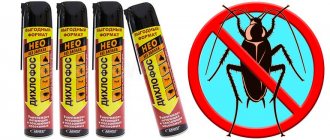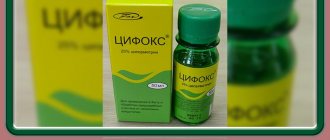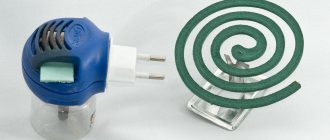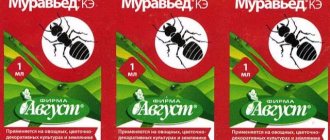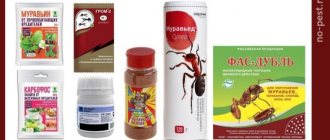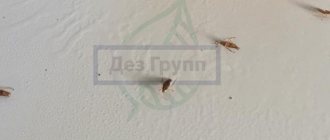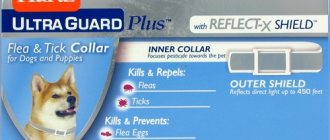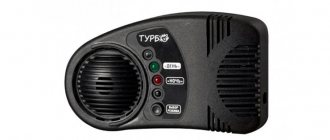Sulfur smoke bombs are tools that allow disinfection and disinsection to be carried out without much difficulty. They are used for processing non-residential premises. As a result of the use of sulfur smoke bombs, harmful insects and pathogenic microflora die, and the protective effect remains for a long time.
But sulfur smoke bombs are highly toxic products, and in order to avoid undesirable consequences, you must strictly adhere to the manufacturer’s recommendations and take precautions.
What is it and how it works
Sulfur smoke bombs are simple designs that consist of a set of tablets of 5, 6, 7, 10 pieces. or sold in powder form, packaged in metal containers. Any smoke sulfur bomb contains sulfur. Its mass fraction is 75-80%.
The product comes with a wick, which ensures safe ignition of the sulfur bomb. Its burning duration is 2 minutes.
The principle of operation of these funds is simple. After their activation, toxic smoke begins to be released, filling the entire space in the room and penetrating into the most inaccessible places. Thanks to this, sulfur bombs are significantly more effective than other chemicals with fungicidal, insecticidal, and acaricidal effects. They also have an affordable price.
Description and principle of operation
A sulfur block is a set of special granules that consist primarily of sulfur. One pack contains from 5 to 10 tablets. The number of granules for one application is directly dependent on the dimensions of the greenhouse.
This fungicide is used not only for greenhouses. There are smoke sulfur bombs on sale for bathhouses, basements and vegetable stores. Such products are used to eliminate bacteria, fungus, mold and rodents.
Checkers work on a very simple principle. To do this, one or another quantity of granules is taken, then they are set on fire in a locked greenhouse. The tablet will smolder for a very long time, repelling pests and disinfecting the room with its smoke.
Smoke fills the entire space of the room, so this method of disinfection treatment is considered one of the most effective. Using this product, you can disinfect the walls, floor, ceiling of the greenhouse, as well as the soil that is in it.
The instructions for the sulfur bomb indicate that its smoke is very toxic to birds, bees and people. Therefore, these products should not be used in basements where people live. It is also undesirable to use “smoke fumes” with other disinfectants.
When and why is it used?
Sulfur bombs are used to treat cellars and vegetable stores before storing crops. As a result, vegetables and fruits are preserved much longer without losing their consumer qualities.
Smoke sulfur bombs are also used for disinfestation and disinfection of greenhouses and greenhouses after harvest from harmful insects, pathogenic organisms and fungi. As a result, the likelihood of crop damage in the next season is reduced, and this in turn greatly facilitates plant care.
The use of smoke sulfur bombs in non-residential premises and against mold is justified. This product also helps reduce humidity levels.
Application
Popular manufacturers
There are several types and names of sulfur bombs on sale today. The following are considered the most popular and reliable:
Sulfur smoke bomb "Climate". The instructions for this product are quite typical. “Climate” is mainly used for processing livestock farms and large vegetable stores. With the help of such tablets you can get rid of lice and fleas. The cost starts from 60 rubles per pack.- FAS checkers. One of the most inexpensive means. However, it has a high level of toxicity. Therefore, after treatment, the room needs to be ventilated for a very long time. It is prohibited to use in places where animals are planned to be kept.
- Checkers ITI. The active substance in these tablets is permethrin. A very high-quality product with which you can easily get rid of woodlice, ants and even cockroaches. It costs about 300 rubles, which is quite justified.
- For large rooms, Vulcan checkers are often used. This is a very effective and cheap remedy. Its price does not exceed 50 rubles per package.
Sulfur bombs today are becoming increasingly popular among private gardeners and agricultural enterprises. They allow you to solve the most advanced problems in a short time.
Types of smoke bombs
You can find many types of sulfur bombs on sale, however, each of them has some characteristics. Before purchasing a room treatment product, you need to carefully read the rules for its use.
The most popular types of sulfur smoke bombs:
- FAS. The weight of the product is 300 g, which is enough to treat 5-10 m3, depending on the degree of infection. Contains 80% sulfur. FAS sulfur block can be used to treat greenhouses, basements, and baths.
- Pawn. This is not a pressed, but a bulk sulfur smoke bomb. Available in metal sealed cans. Checker Pawn is suitable for processing greenhouses and greenhouses. Consumption rate 500 g per 200 m3.
- Climate. Contains 75% sulfur. The mass of the product is 300 g, which is enough to process 10 m3. Sulfur smoke bomb Climate during use saturates the space in the room with toxic smoke, which has a detrimental effect on bacteria, fungi, insects, ticks, and also repels rodents.
- The Whirlwind smoke bomb is also found on store shelves. Its active component is permethrin, which has a targeted effect against pests. According to the instructions, the Whirlwind checker destroys more than 30 species of insects, its destructive effect extends to adults, larvae, and eggs.
Types of checkers for greenhouse processing
In general, several types of smoke bombs are known for treating greenhouses. They differ in the composition of the main active ingredient and, therefore, have their own characteristics of use.
- Sulfur smoke bombs have the widest range of effects and are used against insects (whiteflies, aphids), arthropods (spider mites), slugs, snails, fungi, mold and various rots of bacterial origin.
- Didecyldimethylammonium bromide checkers are relatively safe to use and are used primarily to combat mold and fungi that cause fusarium, fomoz and other diseases, as well as pathogens of bacterial diseases.
- Hexachlorane smoke bombs, having a nerve-paralytic effect, fight well against a variety of insect pests living in the soil and butterfly caterpillars. But they are useless in the fight against spider mites and fungal or bacterial infections.
- Tobacco sticks are safe for plants, so they can be used during the growing season, but they are effective against slugs, arachnids and insects. But they are useless for fighting diseases.
- Permethrin smoke bombs work particularly well against all flying insects, ants and moths.
How to use
Before using sulfur bombs, you must first prepare the room. To do this, you need to remove vegetables, fruits, and preferably shelving from the basement. This is due to the fact that during the combustion of a sulfur bomb, a gas is released, which is not only toxic, but also causes corrosion of the metal. To prevent this, if the racks cannot be removed, it is necessary to lubricate all metal parts with grease or paint them.
The use of a sulfur bomb for treating a cellar is possible after carefully sealing all the cracks so that smoke cannot escape outside. It is also necessary to seal the door opening.
Before using a sulfur bomb, you should immediately calculate the required amount of product. The consumption rate is indicated on the packaging. It is not recommended to buy the product for future use, since during long-term storage it loses its effectiveness.
How to use smoke sulfur bombs is indicated in the instructions:
- For each product, it is necessary to build stands made of bricks measuring 30 x 30 cm.
- Place sulfur bombs on them.
- Place the wick and light it.
- Leave the premises immediately.
- Close the door tightly.
If you need to use several checkers in a room, you need to start setting fire from the furthest one, gradually moving towards the exit. It is prohibited to enter the treated area while toxic smoke is being emitted.
FAS
How long a specific sulfur bomb burns is indicated in the instructions for its use. Fumigation usually lasts from 24 to 36 hours. Upon completion, it is necessary to open the room and ventilate for 1-1.5 days.
Features of use for polycarbonate greenhouses
Many gardeners wonder whether it is possible to use sulfur bombs to treat polycarbonate greenhouses. After all, sulfur dioxide, which is released during the combustion of the product, when interacting with moisture, destroys structural parts and causes the death of plants. However, the manufacturer assures that if all recommendations are followed, treatment with a sulfur bomb is possible in a greenhouse, but only during strictly designated periods.
Before fumigation, it is necessary to remove plant remains from the premises and burn them. Then you should lubricate all metal parts with grease and seal all the cracks. After this, it is necessary to loosen the soil to a depth of 5 cm.
Fumigation is recommended to be carried out in the fall after harvesting, namely at the end of September. If there is a massive spread of pests and pathogenic microflora, the treatment of the greenhouse can be repeated in the spring, but no later than 2 weeks before planting the seedlings. This will prevent the proliferation of parasites and pathogens that survive the winter.
It is recommended to use a sulfur bomb for disinfestation and disinfection of a greenhouse when the temperature of the top layer of soil is +100C. When it decreases, the soil during processing actively absorbs sulfuric acid released during fumigation. This leads to a disruption of the acid-base balance of the soil, which subsequently negatively affects the development and fruiting of planted crops.
After fumigation is completed, the greenhouse must be ventilated for 24-36 hours until the smell of sulfur has completely disappeared. Only after this you can enter it.
Instructions for use
In order for the room to be processed safely, you must correctly follow the instructions for use of the product.
The estimated consumption of the product is 1 checker per 5-10 “cubes” of space. If the room is large, and several checkers are used to process it, they need to be placed and set on fire in such a sequence that the person moves in the direction of the exit.
Step-by-step instructions for use:
- Remove all items that can be removed from the area being treated. Be sure to remove food (including canned food) and plants.
- We treat metal surfaces with anti-corrosion agents. Sulfur dioxide released during combustion accelerates the corrosion of metals. To avoid this, you need to coat the metal surface with paint or coat it with grease.
- In the room being treated, all cracks and openings should be tightly closed: windows, ventilation ducts, any leaks. You also need to prepare in advance for sealing door cracks - you can use tape for this purpose.
- We place a pedestal on the floor (50-100 cm from flammable objects or substances) on which the checker will stand. For these purposes, you can use several bricks, forming a kind of “foundation”. It should be wide enough - approximately 30x30 cm. If the floor is wooden, you should use a metal basin instead of a brick pedestal.
- We place the checker on the “foundation” and remove the protective film.
- Insert a wick into the checker and light it with matches/lighter.
- Wait for a small amount of smoke to appear and leave the room immediately. The wick burns (smolders) for a little longer than 30 seconds.
- We close the front door and seal all the cracks on the outside.
The combustion process itself takes from half an hour to 80 minutes (depending on the humidity in the room).
You cannot enter the premises for 36-48 hours; this time is just enough for processing. After this period, the room must be ventilated for two days. If this is not enough (the smell of sulfur is felt), we extend the ventilation for another 1-2 days.
Example of greenhouse processing (video)
Safety precautions for use
During the manufacturing process (production) or storage at home, the checker is not dangerous (neither for humans, nor for animals, nor for plants), and belongs to the fourth hazard class (low-hazardous compound).
During the combustion process, the substance released belongs to the second hazard class. Therefore, you need to use personal protective equipment to process the premises:
- Respirator (ideally a gas mask).
- Latex gloves.
- You can use a protective apron or boots - but this is not necessary, as long as you have just a change of clothes (not used anywhere in everyday life).
Please note: gauze bandages, homemade respirators with cotton wool filters - all this will not protect against the combustion of sulfur and the formation of sulfur dioxide. In this case, only professional personal protective equipment has protective functions.
Ideally, the work should be done by two people. Both people can lay out checkers, seal cracks and close holes. After which one leaves the room, and the second sets it on fire. The first one in this case plays the role of a belayer - in case of danger, he helps the one who sets the fire to get out. Therefore, both need to use protective equipment.
Smoldering Checker
After treating the room, wash your clothes thoroughly, change the filters on your respirator or gas mask, and take a shower (be sure to use soap). It is advisable to rinse your mouth (immediately after treatment) and drip a saline solution into your nose (for rinsing).
Call an ambulance immediately if the following symptoms occur (during treatment, when you left the premises, or after it):
- headache and/or dizziness;
- attacks of nausea, vomiting;
- pain in the chest, shortness of breath;
- nose bleed;
- difficulty breathing (inability to inhale or exhale normally), wheezing, cough without relief.
Such symptoms indicate poisoning by combustion products. Delayed medical care can lead to serious consequences and even death.
Ways to protect wood from rot and mold: how to treat it?
How to remove mold with hydrogen peroxide?
Related Posts
Precautionary measures
Sulfur bombs have a high hazard class 2, which means they are harmful and even dangerous to humans if precautions are not taken.
Inhaling even small amounts of acrid smoke can cause food poisoning. Staying indoors after activating a sulfur bomb can be fatal. It is also unsafe to use these products in close proximity to flammable objects and substances, as this can lead to a fire.
Before lighting the wick of a sulfur bomb, you must wear gloves, a respirator or gas mask, safety glasses, as well as clothing and shoes that cover exposed skin. After activating the product, you must immediately leave the room being treated and close the door tightly. You cannot go inside until fumigation is completed.
Attention! According to the instructions for use, it is prohibited to use sulfur bombs for fumigating residential premises in apartment buildings. In case of violation of this condition, criminal liability is provided.
Respirator
How to use a sulfur bomb in a greenhouse
To get the maximum effect from using a sulfur bomb and not harm yourself or your plants, you need to know and follow all the basic rules for its use.
When to treat a greenhouse with a sulfur bomb
In autumn, the most optimal time comes for treating the greenhouse with a sulfur bomb. The best time is immediately after the full harvest. This usually occurs at the end of September or October before the onset of stable frosts. It is important that the soil temperature in the greenhouse at the time of treatment does not fall below + 10 °C.
If the infection of the greenhouse is not serious, then a single autumn treatment is sufficient. In winter, with frost, all other parasites should die.
But special situations occur if there was no time to carry out the treatment in the fall or the degree of contamination of the greenhouse is too high. In this case, you can treat the greenhouse with a sulfur bomb in the spring.
But one should take into account the fact that at low temperatures the soil absorbs the resulting sulfuric acid too intensively. Therefore, in order not to harm the plants, it is necessary to wait until the soil surface warms up to + 10 °C. On the other hand, after treatment with a sulfur bomb, at least two weeks must pass before planting seedlings or sowing seeds in a greenhouse. Therefore, it is necessary to monitor current weather conditions and choose the moment to treat the greenhouse with a sulfur bomb in the spring very carefully. Depending on the region, it may occur between the end of March or the beginning of April to the end of April and the beginning of May.
How many sulfur bombs are needed for a greenhouse?
Sulfur blocks are most often sold in packages of 300 or 600 g. The instructions for using sulfur blocks for a greenhouse state that about 60 g of the drug should be used per 1 cubic meter of volume. Accordingly, one package should be enough for 5 or 10 cubic meters of greenhouse air volume. It is important to note that it is the volume that should be calculated, not the area of the surface being treated.
For example, for a standard polycarbonate greenhouse measuring 3x6 meters, about 2 meters high, you need about 3-4 packages of sulfur bombs, weighing 600 g.
Comment! Since the roof of polycarbonate greenhouses is usually a semicircle, the volume is calculated approximately.
However, the consumption of sulfur bombs also depends on the manufacturer. For example, the instructions for the “Climate” sulfur bomb for a greenhouse indicate that only 30 g are used per 1 cubic meter of air, that is, exactly one tablet included in the preparation (to combat mold, fungi and bacteria).
Therefore, before purchasing and using a sulfur bomb from a particular company, it is advisable to carefully study the attached instructions.
How to use a sulfur bomb in a greenhouse
Before disinfecting a polycarbonate greenhouse using a sulfur bomb, it is necessary to carry out a general cleaning of it, make sure that the building is as tight as possible and protect all metal elements of the structure.
- All dry plant debris is removed and burned, and the ground is dug up to move insect larvae closer to the surface.
- All auxiliary equipment is also removed from the greenhouse, and the racks, shelves and polycarbonate covering are washed with a soapy solution and then rinsed with water.
- The entire surface of the soil and polycarbonate is moistened with water from a hose to make the sulfur bomb more effective.
- Windows and vents are tightly closed, and all polycarbonate joints are treated with sealant. If possible, seal all the cracks in the doorway.
- All metal parts are painted or lubricated with a greasy lubricant, such as grease.
When carrying out the actual fumigation, non-flammable stands are prepared for stable placement of sulfur bombs. These can be bricks, stone or concrete blocks. They must be stable and occupy much more space than the sulfur bomb itself. So that if it accidentally falls, the checker does not ignite. It is necessary to place the total number of sulfur bombs so that they are evenly distributed throughout the greenhouse.
Attention! The sulfur bombs should not be divided into many parts, otherwise setting them on fire will take too long.
Since the smoke that begins to be released after smoldering is dangerous not only for inhalation, but also if it gets on human skin, it is necessary to be well protected from it when setting it on fire. Clothing should tightly cover all parts of the body, and the face should be protected with a respirator and goggles.
After installing the checkers, light the fuse. If you don’t have it, you can use pieces of paper, newspaper or, as a last resort, kerosene. Under no circumstances should gasoline be used to ignite a sulfur bomb. If everything went well, then dark spots appear on the surface of the tablets and acrid smoke begins to emit. From this moment on, you should leave the room as soon as possible and close the door behind you as tightly as possible.
The sulfur bombs smolder for several hours, after which the greenhouse should be left hermetically sealed for another day for the most complete disinfection. Then open all windows and doors and ventilate the greenhouse for at least 2-3 days.
Pros and cons of using
The use of sulfur bombs for fumigation of non-residential premises is beneficial, but can also cause some harm.
Main advantages:
- low cost;
- minor labor costs;
- ease of use;
- large range of action;
- high permeability to hard-to-reach places;
- wide range of applications.
Disadvantages of use:
- high level of toxicity for humans, warm-blooded animals, fish, bees;
- have a destructive effect on metal;
- destroy not only pathogenic, but also beneficial soil microflora;
- preliminary preparation of the premises is required.
Advantages and disadvantages
Despite its availability and ease of use, the sulfur bomb has some disadvantages. The most significant of them are the following:
- a sulfur smoke bomb cannot eliminate ingrained and old mold;
- many dangerous bacteria and fungi remain in the soil after treatment;
- metal structures begin to oxidize due to exposure to sulfur smoke;
- chemical compounds that are released into the environment during smoldering are extremely toxic;
- such products are not suitable for treating crops, because they contain substances that can kill any organic matter;
- When using, the product must be removed as far as possible from objects made of flammable materials.
The popularity of checkers is mainly due to their accessibility. Although they also have other advantages:
- high level of efficiency at a low price;
- the instructions for use clearly indicate how to set fire to a sulfur bomb;
- speed of impact.
In addition, companies that manufacture such products have also taken safety measures into account. Therefore, after lighting the wick, at least 1-2 minutes may pass before the checker begins to act. This time is enough to leave the room and protect yourself from the harmful effects of toxins.
Consumption rates
- for disinfection of greenhouses, hotbeds, sheds, greenhouses sulfur bomb Climate (Green Belt) – 300 g per 20 m3
- for the disinfection of greenhouses, hotbeds, sheds, conservatories, sulfur bomb FAS - 60 g/m3
- for disinfecting cellars, sulfur bomb Climate (Green Belt) – 300 g per 10 m3
- for disinfection of cellars sulfur block FAS – 30-60 g/m3
When to treat
Fumigation of greenhouses, hotbeds and greenhouses can be carried out in the fall, after harvesting and cleaning of plant debris.
You can also treat greenhouses in the spring, when the ground has warmed up enough for planting, before planting seedlings, or immediately after sowing the seeds (strictly before germination).
The lower the soil temperature, the stronger the absorption of sulfuric acid. Therefore, the optimal processing time is when the soil temperature is about 10 degrees or higher.
If you use a smoke bomb in the spring, before planting, it is advisable to subsequently spill the soil with phytosporin to restore beneficial microflora.
Is it possible to treat a greenhouse with a sulfur bomb in spring and autumn?
Disinfection treatment should be carried out during the period after harvesting and before planting new plants. This is due to the fact that the smoke that the sulfur bomb emits is highly toxic. Therefore, when processing the premises, all vegetative crops die.
It is best to do the procedure in the fall to destroy overwintering pest larvae and fungal spores. Fumigation has no residual effect, that is, disinfection treatment occurs while the product is burning, and this effect lasts for only 2-3 days. Therefore, in case of severe infection, the procedure must be repeated in the spring before planting in order to consolidate the result.
Important! When carrying out processing, precautions must be taken.
Step-by-step instruction
When using sulfur bombs, you must adhere to the following algorithm of actions:
- Initially, you need to check and make sure that all through cracks have been plugged and the windows are closed.
- Place a smoke bomb in the center of the room being treated. In this case, it should be placed on a surface made of non-combustible material; ceramic tiles, bulk dishes or brickwork are best suited.
- Pour plain water into the jar in which the checker is placed. In fact, all models have a special mark that shows how much liquid it needs to be filled.
- The jar itself must also be immersed in a container of water.
- Depending on the type of product, a chemical reaction will begin after contact with water or you will need to light the wick using a previously prepared reliable lighter.
- Immediately leave the area being treated.
- After at least three hours, the room must be opened, go inside only wearing a respiratory mask and rubber gloves on your hands. Wet cleaning will be required, as well as high-quality ventilation to get rid of the smell of sulfur burning.
The benefits and harms of sulfur bombs for greenhouses
What does the treatment of a polycarbonate greenhouse give:
- disinfection of walls and ceilings, structure foundations, soil surfaces;
- smoke penetrates into all cracks, that is, into all hard-to-reach places where liquid solutions cannot get;
- 1-2 treatments will be required for complete disinfection.
The product also has disadvantages:
- sulfur bomb smoke is toxic and can cause poisoning if safety precautions are not followed;
- After many treatments, the greenhouse material becomes cloudy and small cracks appear on it;
- structures made of metal are damaged;
- sulfurous acid, one of the components of smoke, destroys all bacteria, not only harmful ones, and negatively affects the soil.
Fumigation of a polycarbonate greenhouse cannot be carried out shortly before planting plants in it, which limits the period of use of the sulfur bomb.
Types of tobacco checkers
In stores you can find several varieties of tobacco sticks, which we will discuss in more detail below. All these types of bombs have proven themselves to be safe for crops, unlike sulfur bombs.
In order for there to be any positive effect, you must strictly follow the instructions of the drug. If it is not there, then this product is uncertified.
Tobacco checker Hephaestus
The Hephaestus tobacco bomb contains tobacco crumbs and an incendiary mixture. The packaging has a cylindrical shape, the weight of the package can be 160 or 250 g. Well suited for combating various types of pests: spider mites, aphids, copperheads. It has a stimulating effect on the growth and development of the plant.
If the drug is opened, it can quickly lose its properties. If you have any substance left, it is best to store it away from flammable objects. The storage room must be dry, the air temperature must be +20...+25 degrees. If, for example, the area of your greenhouse is about 25 square meters. m, then it will be enough for you to purchase 1 piece.
Tobacco checker Phytophthora
This type of tobacco stick has proven itself well against fungal diseases: powdery mildew, late blight, rust and other types of fungi. The composition of the tobacco checker includes: tobacco chips, an igniter, a combustion stabilizer, and a large amount of sodium bicarbonate, which has destructive properties in the fight against fungi.
The drug has a cylindrical shape, weighs about 220g. 1 package of the drug will be enough to treat a greenhouse with an area of up to 35 square meters. m. The procedure of fumigation with the drug can be repeated 2 days after the first treatment. If the packaging has been damaged, the drug has the property of self-destruction.
Tobacco checker Vulcan
This type of tobacco stick is well suited for the fight against late blight, as well as other pests of garden crops. It is very popular among summer residents. The drug has a cylindrical shape. The composition includes: tobacco dust, ignition mixture, cardboard membranes.
If you are going to use the drug to stimulate plant growth, then 1 pc. The drug will be enough to treat 50 square meters. m plot. If you are going to carry out treatment against pests, then for 30 square meters. m 1 pc. drug. Insects do not get used to the drug.
Terms of use
In order to achieve maximum effect and at the same time avoid any negative consequences, you must adhere to the following rules when using sulfur bombs:
- When baiting moles and most rodents, it is recommended to place the product directly inside the hole.
- It can be used in premises intended for keeping livestock, but all animals must first be removed from there.
- After treating the room, you should not enter it for several hours.
- If even after two days even the slightest burning smell remains in the treated room, it will need to be additionally ventilated.
- It is recommended to treat greenhouses and greenhouses at least several weeks before sowing any crops, since during this time absolutely all toxic substances will have time to disappear.
- The use of such means in city apartments is prohibited ; for such a violation, the current legislation of the Russian Federation provides for criminal liability.
- The combined use of checkers and other chemicals is not allowed , since it is unknown what combined effect they will produce indoors.
